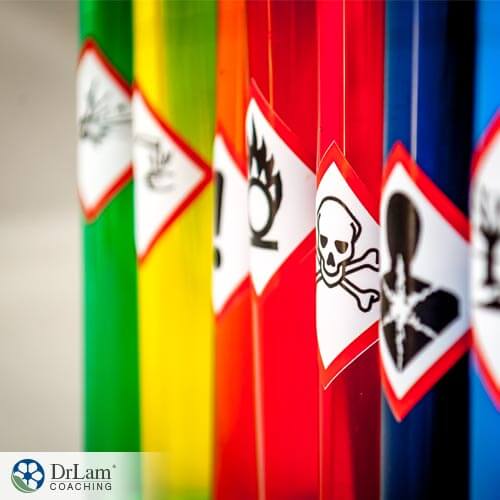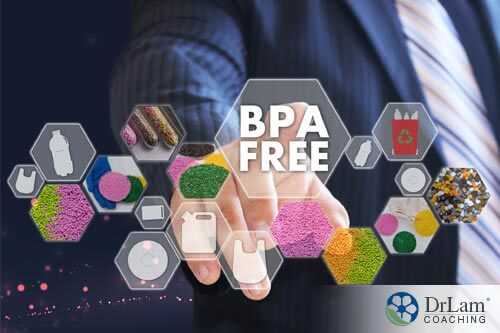 As if we don’t have enough things to worry about, research has indicated that xenoestrogens are nearly everywhere we look. They are bombarding the human body, weakening the immune system, overburdening the liver, and disrupting our hormonal balance. You may not have heard about them yet, but you are definitely familiar with sources of xenoestrogens. They are in almost everything: plastics, feminine products, food, lotion, paint, and shampoo.
As if we don’t have enough things to worry about, research has indicated that xenoestrogens are nearly everywhere we look. They are bombarding the human body, weakening the immune system, overburdening the liver, and disrupting our hormonal balance. You may not have heard about them yet, but you are definitely familiar with sources of xenoestrogens. They are in almost everything: plastics, feminine products, food, lotion, paint, and shampoo.
These sources of xenoestrogens are also behind much of the health advice you hear. You know you should eat organic. But do you know why? You’ve heard BPA-free plastic is safer, but safer than what? You’ve heard household products can contain chemicals, but did you know many women are placing themselves in danger daily just from the makeup they wear?
These endocrine disruptors are altering the way your body should function. Evidence has shown that sources of xenoestrogens are connected to a large amount of human and wildlife health problems. They are dangerous chemicals that we need to learn to recognize so we can avoid them whenever possible.
“Xeno”, or the Greek prefix for foreign, in this case, it refers to chemicals from the outside that get into our bodies and alter the normal function of hormones. They mimic the effect of the female hormone, estrogen, in both males and females. Xenoestrogens are a subcategory of endocrine disruptors that have estrogen-like effects.
Normally, the endocrine system releases hormones that issue commands to various parts of the body. When foreign chemicals enter our bodies, they mimic our natural hormones and block or bind to hormone receptors. Systems that are sensitive to hormones, like the reproductive organs, neurological and immune centers, and growth and development are especially affected.
In layman's terms, natural estrogen connects with a receptor to turn on a hormone, like flipping a switch. When xenoestrogens enter the body, they fit into the same receptors that natural estrogen does, and they flip on switches that should not be switched on, and more estrogen is released. Large doses of estrogen are not desirable. In lab rats and other wild animals, this has created many gender and fertility-related issues.
It is important to note that xenoestrogens are not biodegradable. They are stored in our fat cells and the build-up of these toxins has been linked to breast, prostate, and testicular cancers, infertility, miscarriages, endometriosis, early onset puberty, obesity, and diabetes.
 Scientists did not mean any harm when they first introduced these toxic chemicals into our lives. In fact, it was quite the opposite. One of the first xenoestrogens was synthesized in 1938 to help reduce miscarriages. It was known as DES, or diethylstilbestrol, and was considered a “wonder-drug”. It was prescribed for all pregnant women at the time as if it was a vitamin. However, it ended up causing greater harm, as fetuses who were exposed to DES in utero had higher chances of getting vaginal cancer later in life. In addition, mothers who took DES had higher chances of getting blood clots.
Scientists did not mean any harm when they first introduced these toxic chemicals into our lives. In fact, it was quite the opposite. One of the first xenoestrogens was synthesized in 1938 to help reduce miscarriages. It was known as DES, or diethylstilbestrol, and was considered a “wonder-drug”. It was prescribed for all pregnant women at the time as if it was a vitamin. However, it ended up causing greater harm, as fetuses who were exposed to DES in utero had higher chances of getting vaginal cancer later in life. In addition, mothers who took DES had higher chances of getting blood clots.
Coincidentally the same year, DDT, or dichlorodiphenyltrichloroethane, was also created as an insecticide. This xenoestrogen proved to be the most effective chemical for eliminating diseases transmitted through insects such as malaria. However, DDT is also a possible carcinogen and has serious effects on the liver and reproduction in high doses.
There are approximately 70,000 recognized chemicals that are toxic, carcinogenic, and have hormonal effects. These endocrine disruptors are entering the human bodies and are acting as synthetic estrogen. They are causing a dangerous epidemic that is affecting our bodies and our health worldwide.
These are among one of the greatest sources of xenoestrogens. You can find them in bleached personal care products for women, pesticides, dry cleaning chemicals, and plastics.
If you are not buying organic, your food is full of xenoestrogen injections, supplements, bovine growth hormones, pesticides, and a common food preservative found in processed foods known as BHS, or butylated hydroxyanisole.
These xenoestrogens can be found in popular creams and cosmetics.
Also called esters of phthalic acid, these are used to increase the flexibility, transparency, durability, and longevity of substances. They can be found in baby lotions and powders.
These sources of xenoestrogens can be found in sunscreen.
These can be found in perfumes, deodorizers, and air fresheners.
These are also present in nail polish removers.
Birth control pill contains high levels of this source of xenoestrogen. Condoms and diaphragms have surfactants and spermicides.
These are often full of harsh and toxic chemicals.
Found in dryer sheets, fabric softeners, and detergents. These petrochemicals absorb right into the skin.
These can come from copiers and printers, carpets, and fiberboards.
This includes DDT, Atrazine, Endosulfan, and Methoxychlor.
There are many sources of xenoestrogens, and this list is not exhaustive. In addition to the above-mentioned sources, additional possible sources include:
It may be virtually impossible to live “xenoestrogen free,” but there are ways to avoid contact as much as possible:

Look for the label “BPA Free” on plastics. BPA, or Bisphenol-A, is used in the manufacturing and the breaking down of polycarbonates in plastic bottles and can also be found in the lining of many food and juice containers. However keep in mind that even though they are BPA free, they could have BPF, Bisphenol-F, or BPS, Bisphenol-S, which might also be similar to BPA and just be a different name used by manufacturers. It is best to avoid heated plastics, plastic lined items, and Styrofoam, as the polycarbonate escapes. Heating sources include microwave, ovens, and the sun. Use glass, ceramics, or steel to store foods and liquids whenever possible.
Buy hormone-free and grass-fed animal products including eggs, poultry, meats, and dairy. Avoid non-organic coffee and tea as they are highly sprayed with pesticides. Choose all natural brands and avoid harmful preservatives.
Sources of xenoestrogens are ten times more potent if they are applied to the skin through cosmetics and toiletries. Unlike when they are taken orally, what is applied directly to the skin passes into the body without the detoxification process of the liver. Always choose natural plant-based products and read the ingredients carefully. Use nail polish and sunscreens with extreme caution, or not at all.
The chemicals used can leach into your food and create fumes when heated. Cast iron is a great and healthy alternative for cooking.
Tin cans are usually lined with BPA which is used to reduce the metallic taste that can often be found in canned food items. There is also a possibility the alternatives to BPA some cans are now being lined with are just as bad. Fresh or frozen is best.
Don't drink or eat hot food items from Styrofoam cups or containers.
Many household cleaners are sources of xenoestrogens. Use the good-old-fashioned household cleaning supplies like baking soda, Borax, and white vinegar
Use a reverse-osmosis filter for your drinking and bathing water. Water treatment plants are not designed to remove any hormonal pollutants like xenoestrogens. These toxins are dangerous contaminants. When fish and frogs are exposed to them, they have been known to actually switch genders! Don't drink bottled water either; it is not regulated and may be polluted.
These are common sources of xenoestrogens that many people are unaware of. Not only are they hormone disruptors, but these products have been linked to causing cancer, so stay away! Instead, try eating foods that are high in B-vitamins as they are natural insecticides. Sprays made from essential oils can be a good alternative, but never apply undiluted essential oil directly to your skin. These make good insect repellent:
Having a hormone imbalance from xenoestrogens can have a profound effect on the entire human body. Most people do not realize that the endocrine system is made up of eight glands that are located throughout the entire body and that everything in the NeuroEndoMetabolic (NEM) Stress Response system is related. When one system goes down, the rest are also damaged and affected. A few of the most common symptoms from a hormone imbalance include:
 There is compelling evidence that xenoestrogens and breast cancer are linked. Xenoestrogens are similar to estrogen in their chemical structure. Once inside the body, they can behave like estrogen. Excessive xenoestrogen over time can contribute to estrogen-driven hormonal disorders including PCOS, fibroids, endometriosis, PMS, and breast cancer. As sources of xenoestrogens have increased over the past several decades, so have the rates of breast cancer. In 1950, one in every twenty women had breast cancer. The current rate is now one in every eight. 46,000 women die of this estrogen-driven disease annually.
There is compelling evidence that xenoestrogens and breast cancer are linked. Xenoestrogens are similar to estrogen in their chemical structure. Once inside the body, they can behave like estrogen. Excessive xenoestrogen over time can contribute to estrogen-driven hormonal disorders including PCOS, fibroids, endometriosis, PMS, and breast cancer. As sources of xenoestrogens have increased over the past several decades, so have the rates of breast cancer. In 1950, one in every twenty women had breast cancer. The current rate is now one in every eight. 46,000 women die of this estrogen-driven disease annually.
The synergistic effects of exposure to sources of xenoestrogen are well documented as being harmful to our health, yet they still remain largely unknown to the general public. These substances can alter estrogen levels in the body, and over time, they become difficult to eradicate. The liver loses its ability to detoxify properly, leaving people ill, fatigued, and prone to chronic illness.
Children are especially susceptible to the sources of xenoestrogens and extreme caution should be taken with the food they consume, and the products they are exposed to.
People who suffer from chronic illnesses that affect the hormones like adrenal fatigue syndrome are also sensitive to sources of xenoestrogens. The presence of additional hormones in an already overburdened body creates stress for all the organs, especially the liver and kidneys. Those who suffer from adrenal fatigue should get into the habit of reading all labels of common foods and household items, and stay away from sources of xenoestrogens as much as possible.
No. Sources of xenoestrogens are everywhere we look. They’re in many common household items, the food we eat, and the clothes we wear. It’s impossible to avoid them in entirety, but it’s best to become educated on the sources and avoid as many of them as you can.
